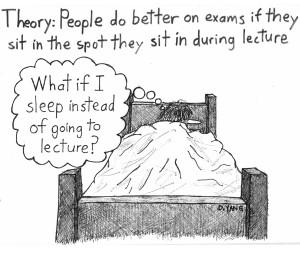
Image Contributor;
On any bustling university campus, it can be tough to see the big picture.Why? College life is insulated. Classes, homework, exams, sports – and, of course, the wilderness that is collegiate social life – tend to keep us too busy to make any meaningful evaluation of our time at Georgetown. (That is, until we graduate, when our appraisals quickly devolve into fits of sobbing.)Editing a student newspaper isn’t especially conducive to real reflection, either. Along with a sprawling staff of editors, writers, photographers and assistants, I’ve spent the last six months covering breaking news, rewriting headlines, fact-checking articles and poring over captions. Only on occasion have I looked up from my work to consider how I feel about Georgetown, The Hoya and their respective futures.But it’s never too late.Five-eighths of my way through college, there are two things I feel confident about. Georgetown is good; The Hoya is good. Learning on the Hilltop and living in the Leavey Center office of The Hoya (or vice versa) have been privileges, both highly influential in my development as a person.But I also know that both Georgetown and The Hoya are imperfect – and, after all, there’s little use in life bothering with things that don’t need improvement.In an editorial published in this issue, the editorial board of The Hoya [weighs in](https://www.thehoya.com/opinion/tuition-takes-its-toll/) on the university’s struggle to keep its finances on pace with its status as a “top-tier,” nationally recognized and admired university. Georgetown really is an elite university, in many ways (at least that’s what U.S. News and World Report tells me) – and yet, when I think of Georgetown in the context of American higher education, the word that comes to mind most often is “almost.”Our endowment lags behind those of most of the institutions ranked higher on the U.S. News list of top universities. Our campus strains to expand – unsuccessfully, for the most part – against the confines imposed by the neighborhood and the Potomac. Year after year, we churn out interns, graduate students, and future congressional aides and Wall Street infantrymen. (OK, and the occasional president.) Georgetown’s accomplishments are continually measured primarily in relation to the limits of its resources.The university cannot decide what it wants to be: a niche Jesuit college or a university for the world, in the mold of our Ivy League almost-peers. It has spent the past few decades trying to be both, but whether its efforts prove successful remains to be seen.The Hoya is on a similar journey. As student-run newspapers go, we’ve done all right, and we have the staff and readership to prove it. Heck, we even got mentioned on “The West Wing” once. We’ve blundered along the way, too – over the past two years, The Hoya has been particularly in need of more reflection, self-scrutiny and appreciation of the big picture – but we retain a place in our community that we’ve held for almost 90 years.In terms of our online presence, the size of our staff, the circulation of our print edition and our relevance outside Healy Gates, however, we tend to lag behind student newspapers at places like Yale, Harvard, Northwestern and The George Washington University. Most of this is a result of our lack of financial independence from Georgetown; fundamentally because of the university’s historical unwillingness to allow a group of Georgetown students to take responsibility for an independent newspaper called “The Hoya,” as student journalists we’re restrained from providing the public service a community like ours deserves.Georgetown loves to pat itself on the back, and it often deserves to – the insignificance of the quibbles that sometimes appear on this viewpoint page makes me think that in general, Georgetown does a pretty good job. The consistent quality of this page and the others we print twice a week makes me think that The Hoya does a decent job, too.But we can always do better and fly higher. In the recent past, this university and The Hoya have come a long way; to catch up with the models we seek to emulate, however, there’s more to do.The university must loosen its death grip on tradition – and not just as relates to religion – and fully commit to the sort of innovation that has made the nation’s best universities the best. The Hoya must fight for independence as vigorously as possible, because its relationship with the university presents an insurmountable barrier to institutional growth.The most dangerous thing in life is to learn to cruise, to feel comfortable enough with oneself that one stops striving for betterment. Only with a modification of outlook can Georgetown and The Hoya – its largest newspaper, its de facto undergraduate journalism program, its watchdog – stop cruising and start soaring.Kevin Barber is a junior in the College and the 135th editor in chief of The Hoya. His term ends Saturday.*To send a letter to the editor on a recent campus issue or Hoya story or a viewpoint on any topic, contact [opinionthehoya.com](opinionthehoya.com). Letters should not exceed 300 words, and viewpoints should be between 600 to 800 words.*”